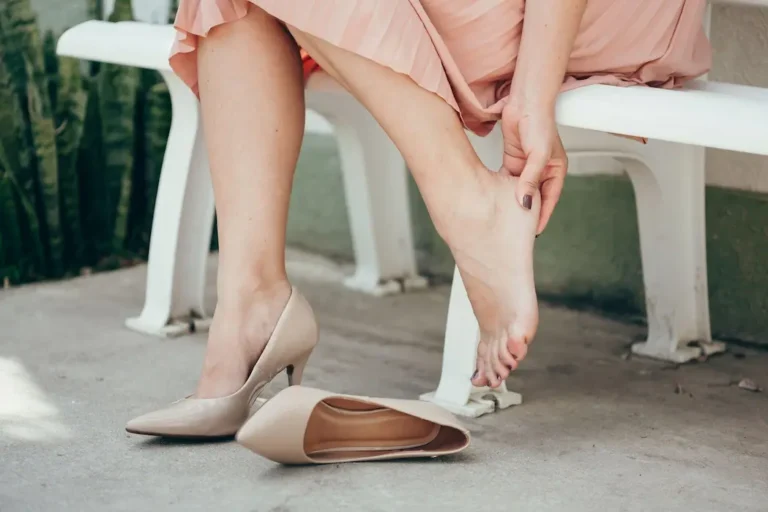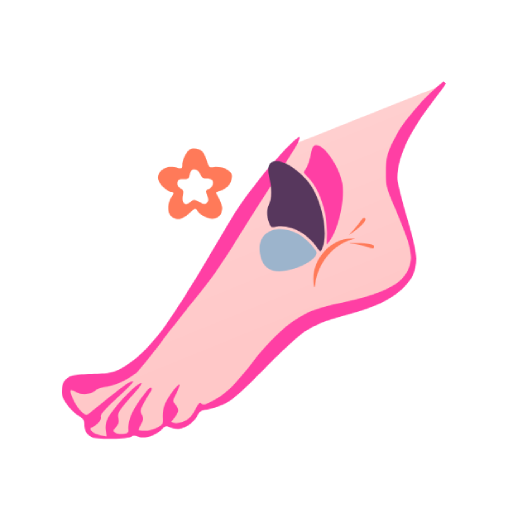Inner thigh ingrown hair cysts can be incredibly discomforting and unsightly. They often arise from simple shaving or hair removal practices but can become painful cysts. This article will explore what causes these cysts, how to identify them, effective treatment options, and measures to prevent their occurrence.
What Is an Ingrown Hair Cyst?
An ingrown hair cyst, or pilonidal cyst, is a small pus-filled sac that forms when a hair follicle becomes clogged and infected.

These cysts typically occur when hair grows back into the skin, leading to inflammation and the development of a cyst.
Causes of Inner Thigh Ingrown Hair Cysts
Hormonal Factors
Hormonal changes in the body can influence hair growth patterns, making individuals more susceptible to ingrown hair cysts. Puberty, pregnancy, and hormonal imbalances can all play a role.
Friction and Irritation
Constant friction between the inner thighs, often exacerbated by tight clothing, can irritate hair follicles and lead to ingrown hair cysts.
Tight Clothing
Wearing tight clothing can trap sweat and bacteria close to the skin, creating an ideal environment for ingrown hairs to develop.
Symptoms and Identification
Identifying an ingrown hair cyst is crucial for timely treatment. Some common symptoms include:
Pain and Discomfort
Ingrown hair cysts can cause pain and discomfort, making walking or sitting painful.
Redness and Swelling
The affected area may become red and swollen as a result of inflammation.
Pus-Filled Bumps
A telltale sign of an ingrown hair cyst is the presence of pus-filled bumps or abscesses under the skin.
Treatment Options
Several treatment options are available for inner thigh ingrown hair cysts, depending on their severity.
Home Remedies
Mild cases can often be treated at home with warm compresses, over-the-counter creams, and gentle exfoliation.
Over-the-Counter Solutions
Topical treatments like hydrocortisone cream or antibiotic ointments can help reduce inflammation and promote healing.
Medical Interventions
In severe cases, a healthcare professional may need to drain the cyst or prescribe antibiotics to clear the infection.
Preventing Ingrown Hair Cysts
Prevention is vital when it comes to ingrown hair cysts. Here are some practical measures:
Exfoliation
Regular exfoliation can help remove dead skin cells and prevent hair follicles from clogging.
Proper Shaving Techniques
Shave toward hair growth, use a sharp razor, and avoid shaving too closely to the skin.
Loose-Fitting Clothing
Opt for loose-fitting clothing to reduce friction and allow the skin to breathe.
When to Seek Medical Help?
Suppose your ingrown hair cyst is extremely painful, large, or doesn’t improve with home remedies. In that case, it’s essential to consult a healthcare professional for proper evaluation and treatment.
Complications of Ignoring Ingrown Hair Cysts
Ignoring ingrown hair cysts can lead to complications such as infection, scarring, and the development of larger, more painful cysts.
Natural Remedies and Tips
Some natural remedies, like tea tree oil and aloe vera, can relieve the symptoms of ingrown hair cysts. Additionally, maintaining good hygiene practices can help prevent their recurrence.
Pilonidal Inner Thigh Ingrown Hair Cyst
Pilonidal inner thigh ingrown hair cysts can be painful and discomforting, requiring proper understanding, diagnosis, and treatment. In this article, we will delve into the details of this condition, its symptoms, diagnosis, treatment options, prevention strategies, and living with it.
Symptoms of Pilonidal Inner Thigh Ingrown Hair Cysts
Pain and Discomfort
One of the primary symptoms of pilonidal cysts on the inner thigh is pain and discomfort. This discomfort can range from mild to severe and may worsen when sitting or moving.

Swelling and Redness
The affected area often becomes swollen and red, which can be visually noticeable. This is usually accompanied by tenderness when touched.
Drainage or Abscess Formation
In some cases, pilonidal cysts may develop into abscesses, leading to the drainage of pus and blood. This can be not only painful but also emotionally distressing.
Recurrence
Pilonidal cysts tend to recur, causing repeated pain and discomfort over time. Understanding the triggers for recurrence is essential for managing the condition effectively.
Diagnosis and Medical Evaluation
To diagnose pilonidal cysts on the inner thigh, a healthcare professional will physically examine the affected area. They may also recommend imaging tests, such as ultrasound or MRI, to assess the extent of the cyst and rule out other conditions.
It’s crucial to consult a healthcare provider for proper evaluation, as untreated or misdiagnosed pilonidal cysts can lead to complications.
Treatment Options for Pilonidal Inner Thigh Ingrown Hair Cysts
Conservative Treatments
Mild pilonidal cysts may respond to conservative treatments like warm compresses, antibiotic therapy, and pain management. However, these methods may not provide a long-term solution for more severe cases.
Surgical Interventions
Surgery is often the most effective treatment option for pilonidal cysts. Procedures may include draining the cyst, removing hair follicles, or excising the cyst entirely. Recovery times can vary, but post-treatment care is essential to minimize the risk of recurrence.
Prevention and Self-Care Tips
Maintaining Good Hygiene
Regular cleansing of the affected area is crucial to prevent infection and recurrence. Keeping the site clean and dry can help reduce the risk of cyst formation.
Avoiding Tight Clothing
Wearing tight clothing can exacerbate the condition by increasing friction and pressure. Opt for loose-fitting garments, especially if you are prone to pilonidal cysts.
Hair Removal Techniques
Proper hair removal methods, such as shaving or waxing, can reduce the chances of hair ingrown and causing cysts.Seek guidance from a dermatologist regarding a safe approach to hair removal.
Lifestyle Modifications
Making specific lifestyle changes, such as avoiding prolonged sitting or activities that create excess friction on the inner thigh, can help prevent the development of pilonidal cysts.
Living with Pilonidal Cysts
Coping with pilonidal cysts can be challenging, both physically and emotionally. It’s essential to seek support from healthcare professionals and connect with others who have experienced similar issues. Making necessary lifestyle adjustments can also improve your quality of life.
Inner Thigh Ingrown Hair Cyst Removal
Removing inner thigh ingrown hair cysts is a topic of concern for many individuals who experience the discomfort and pain associated with these cysts. While some cysts may resolve independently or with conservative treatments, others may require medical intervention. Here, we’ll provide a brief overview of the removal process.
Consultation with a Healthcare Professional
The first step in addressing an inner thigh ingrown hair cyst is to consult a healthcare professional. They will evaluate the cyst’s size, location, and severity to determine the most appropriate action. It’s crucial not to attempt self-removal, which can lead to infection or complications.
Surgical Removal
Surgical removal may be recommended in cases where the cyst is large, painful, or recurrent. This typically involves a minor surgical procedure performed by a qualified healthcare provider. During the process, the cyst and any associated hair follicles are removed. Surgical removal can provide long-lasting relief and reduce the risk of recurrence.
Post-Removal Care
After the cyst removal procedure, following your healthcare provider’s post-operative instructions is essential. This may include keeping the area clean, applying prescribed medications, and avoiding activities that irritate the surgical site. Proper post-removal care is crucial for a smooth recovery.
Natural Remedies and Prevention
While surgical removal is often the most effective solution, individuals can take steps to prevent ingrown hair cysts from occurring in the first place. These steps may include proper hair removal techniques, maintaining good hygiene, and avoiding tight clothing that can increase friction.
Conclusion
Dealing with inner thigh ingrown hair cysts can be uncomfortable, but understanding their causes, identifying symptoms, and implementing preventive measures can help you manage and avoid these pesky cysts. Remember, timely treatment and good skincare practices can make all the difference in keeping your skin healthy and cyst-free.
FAQs
Can ingrown hair cysts go away on their own?
Ingrown hair cysts rarely resolve themselves; they often require treatment.
How long does an ingrown hair cyst take to heal?
The healing time varies, but proper treatment typically takes a few weeks.
Are there any dietary changes that can help prevent ingrown hair cysts?
Maintaining a healthy diet and staying hydrated can contribute to overall skin health.
Can ingrown hair cysts lead to permanent scarring?
Repeated ingrown hair cysts may cause scarring, so it’s crucial to address them promptly.
Is laser hair removal a permanent solution for preventing ingrown hair cysts?
Laser hair removal can be an effective long-term solution for preventing ingrown hairs, but results may vary.
Can pilonidal cysts resolve on their own?
While some mild cases may improve without treatment, more severe cases typically require medical intervention.
How do you eliminate an ingrown hair cyst on your inner thigh?
Consult a healthcare professional to get rid of an ingrown hair cyst on your inner thigh. They can recommend appropriate treatments, including surgical removal if necessary. Attempting self-removal can lead to complications, so seeking professional guidance for safe and effective resolution is crucial.
Will a cyst on my inner thigh go away?
Cysts on your inner thigh may not always resolve on their own. It’s advisable to consult a healthcare professional for proper evaluation and treatment options, as some cysts may require medical intervention to prevent complications and ensure resolution.
How do you get rid of an ingrown hair cyst?
Consult a healthcare professional for safe and effective removal options, including surgical intervention. Attempting self-removal can lead to complications, so professional guidance is essential.








